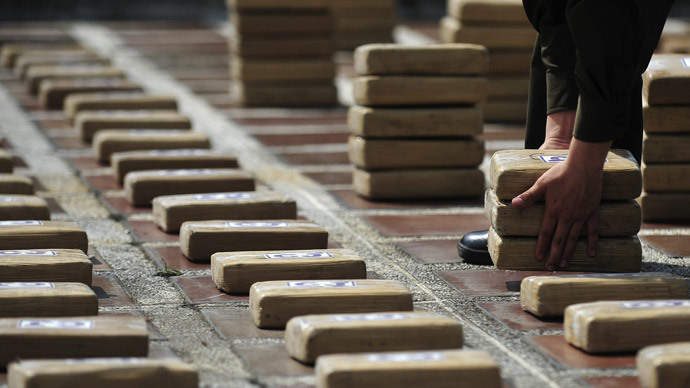Dangerous ‘legal highs’ are 'flooding' drug market in Europe - research

The number of new unregulated drugs is growing on the European market, with at least 250 new substances appearing over the last 4 years. They may be more dangerous than heroin, a new report warns
“A plethora of new substances”are being produced in ‘clandestine laboratories’ across Europe and they are not controlled by international law, says the European Drug Report released by the European Monitoring Centre for Drugs and Drug Addiction (EMCDDA).

According to the report, in 2013 at least 81 new drugs were reported for the first time to the EU Early Warning System, which brought the number of new substances to over 350.
“It must be a serious concern that, recently, we have witnessed the emergence of both new synthetic opioids and hallucinogenic substances that are so highly pharmacologically active that even tiny quantities can be used to produce multiple doses,” says the research.
Meanwhile, the internet “is playing a growing role in shaping how drugs are being sold and poses unique challenges to disrupting the supply of both ‘new’ and ‘old’ drugs,” says the paper.
“The fact that manufacturers, suppliers, retailers, website-hosting and payment processing services may all be based in different countries makes it particularly difficult to control,” it adds.
The authors of the research mention so-called ‘darknets’ or anonymous networks.
“The technology to access these sites is increasingly being incorporated into consumer software, opening up these marketplaces to more people,” it says.
The problem about the new drugs is the substances are often sold on the market as ‘legal highs,’ i.e mimicking the effects of controlled drugs.

“Sometimes they are sold as medicines, in other cases they are sold clandestinely as illicit drugs such as heroin, or they may be sold as ‘legal highs’, ‘research chemicals’ and even as ‘food supplements’” adds the paper.
According to the study paper, the EMCDDA is only beginning to grasp the future implications of these developments for both public health and drug control, but they appear “to have the potential to transform the nature of the problems we face.”
“I am deeply concerned that the drugs consumed in Europe today may be even more damaging to users' health than in the past. There are signs that the ecstasy and cannabis sold on the street are getting stronger,” said European Commissioner for Home Affairs Cecilia Malmström.

EU countries’ drug consumption in figures
According to the report, two of the most serious consequences of using drugs include overdose deaths and drug-related HIV infections.
“Recent outbreaks of HIV among drug users in Greece and Romania, together with ongoing problems in some Baltic countries, have stalled Europe’s progress in reducing the number of new drug-related infections,” says the study. The countries jumped from 2 percent in 2010 of the total number of newly reported diagnoses to 37 percent in 2012.
In 2012, the average rate of newly reported HIV cases connected with drug use was 3.1 per million populations. The rate of HIV diagnoses remain high in Estonia (53.7 cases per million in 2012) and Latvia (up 46 cases per million in 2012).
Meanwhile, around 6,100 overdose deaths were reported in Europe in 2012, with the average mortality rate estimated at 17 deaths per million population (15–64 years).

The highest rates have been reported in Estonia (191 per million), Norway (76 per million), Ireland (70 per million), Sweden (63 per million) and Finland (58 per million).
According to the report, around one million seizures of illicit drugs are reported annually in Europe, with 80 percent of them for cannabis.
“Almost a quarter of the adult population in the European Union, or over 80 million adults, having used illicit drugs at some point in their lives,” it says. “Europe is a major destination for controlled substances and also plays a more limited role as a transit point for drugs en route to other regions.”
Meanwhile, cocaine remains the most popular drug among European drug-users.
At least 90 percent of all cocaine clients have been reported by only five countries, with the UK, Germany, Spain, Italy and Netherlands topping the list.
“Cocaine is the most commonly used illicit stimulant drug in Europe, although most users are found in a restricted number of countries. It is estimated that about 2.2 million young adults aged 15 to 34 (1.7 percent of this age group) used cocaine in the last year,” says the research paper.
Ecstasy, the second most popular drug in the EU, was consumed by 1.6 million or 0.5 percent of adults (15–64) in the last year, with Bulgaria (2.9), the UK (2.4) and Estonia (2.3) at the top.
















